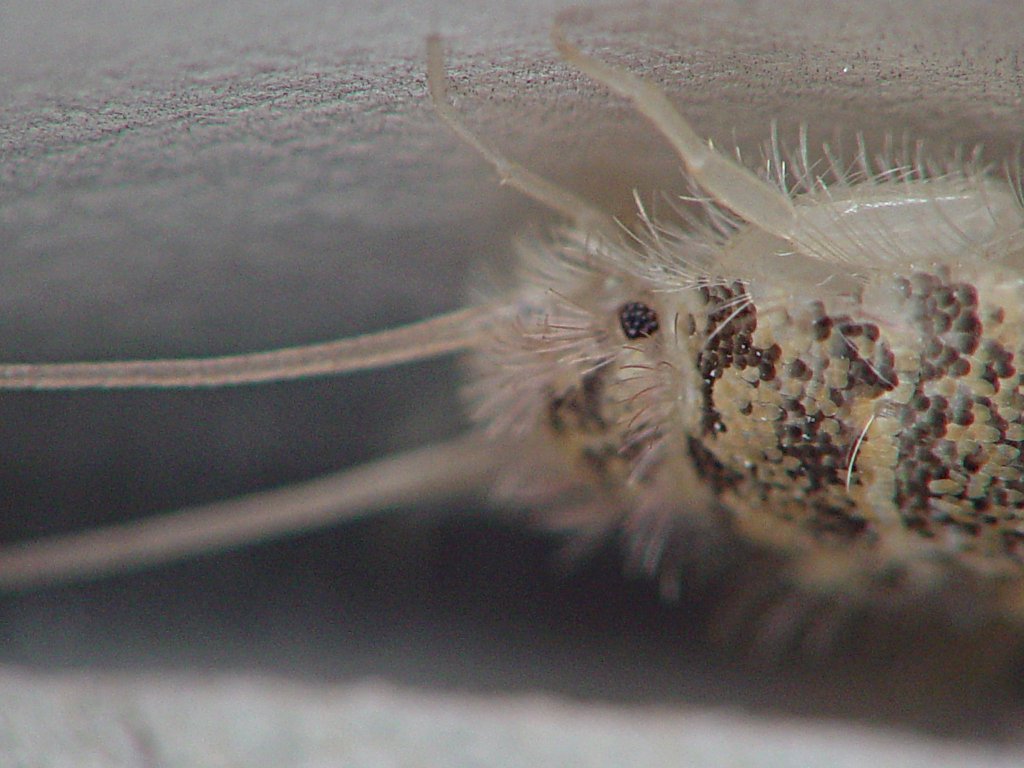
Ecology of the firebrat
The firebrat is widespread among tropical and temperate
climates. In these climates, they are likely found in soil,
under stones, and around rotting woods (Ordish
1960).
They are believed to have originated in a warm climate setting. But they
are
also found in colder regions; where they are more limited to
 cohabitation with humans (Sweetman
1938). Heated buildings provide
potential microhabitats for the firebrat. In the Upper Midwest States they
rely on humans for shelter, food, and to keep warm. The
firebrat favors warm (roughly 37 C), dark, and semi-humid areas
such as: near furnaces, fireplaces, inside insulation, around
heated pipes, or close to hot water heaters.
cohabitation with humans (Sweetman
1938). Heated buildings provide
potential microhabitats for the firebrat. In the Upper Midwest States they
rely on humans for shelter, food, and to keep warm. The
firebrat favors warm (roughly 37 C), dark, and semi-humid areas
such as: near furnaces, fireplaces, inside insulation, around
heated pipes, or close to hot water heaters.
By using walls, base boards, pipelines, heating ducts, book cases, closets, and window frames as byways; they can scamper virtually anywhere in the home to scavenge their food (Gojmerac 1973). T. domestica is mostly nocturnal in its habits, particularly when food is plentiful. When food is scarce, they become more active in the day. When firebrats become starved or there is little to eat they can resort to cannibalism (Adams 1933).
These insects are very quick and active; when disturbed they are fast to hide so they are difficult to observe naturally in the home. But if you look around dark, warm, semi-humid areas around the home that are potential microhabitats; you may find evidence of a molted exoskeleton, or exuviae from a firebrat. There are a number of biotic and abiotic factors that affect microhabitat selection by the firebrat including temperature, light level, height of shelter, and size of shelter entrance (Tremblay & Gries 2006).